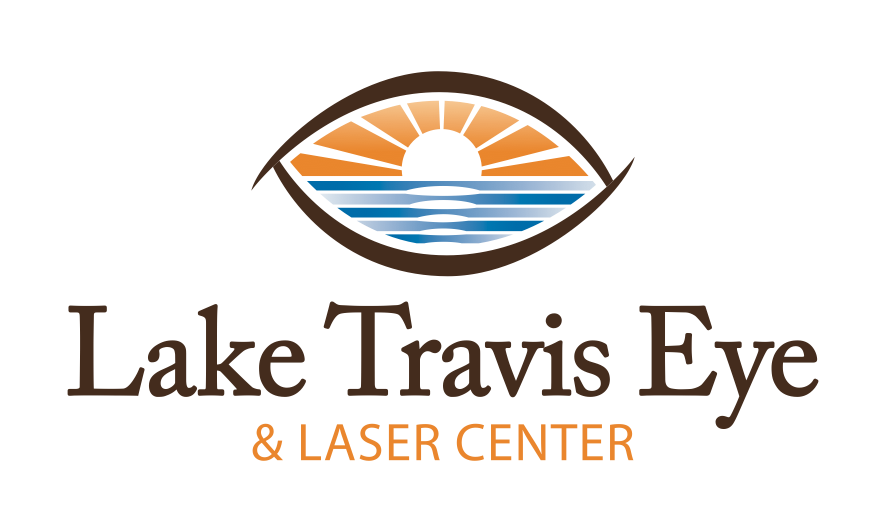
DRY EYE
Dry eye is a condition where your eye is not producing enough tears to adequately wet the front of the eye. This can be quite confusing, since one of the common symptoms of dry eye syndrome is excessive watering of the eyes. This is possible because the eye makes two different types of tears, lubricating and reflex.
Lubricating tears contain a specific balance of water, mucus, oil, proteins, and antibodies to protect the front surface of the eye. These tears are produced steadily throughout the day.
Reflex tears do not actually have much lubricating value. They are produced as an automatic reflex to flush the eye when it is irritated or injured. These tears gush out in such a large amount that they overwhelm the tear drainage system and spill out onto one’s lower eyelid and cheek. Common situations that produce reflex tears: cutting onions, accidentally scratching your eye, and being around smoke. In dry eye syndrome, the lack of tears actually irritates the front surface of the eye, and reflex tears can result. The disease is often difficult to diagnose, and can be confused with other conditions that affect the front surface of the eye, such as allergies or infections.
SYMPTOMS
A stinging, burning, or scratching sensation in your eyes
A feeling that a foreign body is in your eyes
Stringy mucus in or around your eyes
Easily irritated eyes by smoke or wind
Red or pink eyes
Eye fatigue even after short periods of reading
Sensitivity to light
Difficulty wearing contact lenses
Blurred vision, often worsening at the end of the day
CAUSES
Part of the natural aging process. 75% of people of age 65 suffer from dry eye
Diseases such as diabetes, Sjogren’s, Parkinson’s, and lupus
Post-menopausal, pregnancy, oral contraceptives, and other hormonal changes
Prescription medications such as some high blood pressure medications, antihistamines, diuretics, antidepressants, sleeping pills, and pain medications
Over-the-counter medications such as cold and allergy products, motion sickness therapies, and sleep aids
Hot, dry, windy conditions
High altitude, air conditioning, and smoke
Reading, using a computer, watching TV
Contact lenses
Various types of surgery including LASIK and corneal transplantation
Diagnosis
Along with the above symptoms, certain characteristics seen on eye examination can be clues to dry eye syndrome. Mild conjunctival redness (from dilated blood vessels), and tiny spots of dryness or inflammation on the cornea in a certain pattern are commonly seen with dry eye.
Certain testing may be undertaken by the doctor in order to measure the level of tear production (both lubricating and reflex tear production may be measured), and to measure how quickly the tear film evaporates between blinks.
TREATMENT
Eyelid Hygiene
When dry eye is accompanied by inflammation of the eyelids (blepharitis), special lid cleaning techniques and antibiotics may be given.
Artificial Teardrops
Artificial teardrop use helps to make up for the lack of natural lubricating tears. This is the most common therapy for dry eye. There are numerous over-the-counter brands of artificial tears that come in liquid or a thicker gel form (usually reserved for night-time use). Some contain preservatives, some do not. Preservatives may cause irritation in those with sensitive eyes and in those that use teardrops multiple times daily. If commonly used artificial tears (such as Systane, Refresh, or Blink) do not give extended symptomatic relief, some patients find that Oasis Tears Plus provide improvement.
Prescription Eye Drops
Restasis, Cequa, and Xiidra are anti-inflammatory medications that lead to increased tear production by reducing inflammation. They are the only topical eye drop treatments proven to increase tear production!
Punctal Plugs
Puncta are the holes in your eyelids that lead to the drainage ducts that drain your tears into your nose. Punctal plugs are made of very soft flexible silicone, and can really only be seen with a microscope. These instruments do exactly what they sound like: they plug up the tear drainage system and allow the tears to remain wetting the front of the eye (imagine plugging the drain in the sink). The procedure is quick and painless, and can usually be done in less than 3-4 minutes in the office.
Anti-inflammatory Eye Drops
Sometimes, dry eye is so severe that there is a large amount of inflammation affecting the front surface of the eye. In these cases, the doctor might recommend temporarily using anti-inflammatory eyedrops such as steroids until the condition begins to improve.
